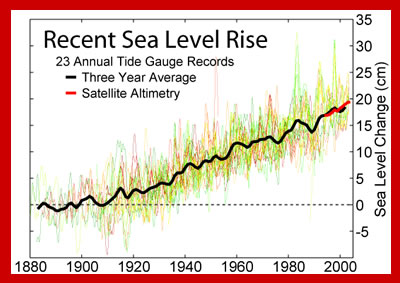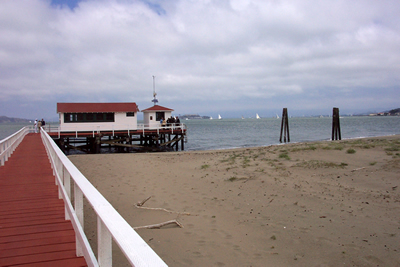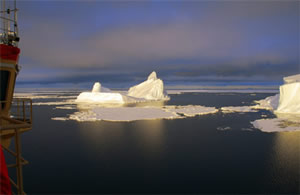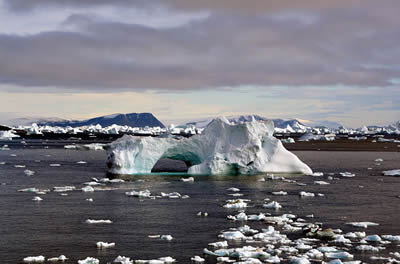Click on image for full size
Courtesy of Robert A. Rohde/Global Warming Art Project
Climate Change and Sea Level Rise
The low-lying coast of Bangladesh in South Asia is home to millions of people, yet the amount of sea level rise predicted for the 21st Century is expected to change that, flooding homes with seawater and impacting an estimated 13 million people.
Bangladesh is one of many coastal areas worldwide where homes, towns and cities are in jeopardy of being flooded as sea level rises due to global warming. Currently, global (or eustatic) sea level is rising about 3 mm per year (about 1/8 inch.) There is a high level of uncertainty about how much sea level rise we can expect for the 21st Century. The Intergovernmental Panel on Climate Change estimates between 18-59 centimeters (7-23 in) of sea level rise. If an ice sheet slips into the ocean sea level would rise much more rapidly.
How does global warming cause sea level to rise? There are two reasons. First, when climate warms, water that is on land in glaciers and ice sheets melts and makes its way down rivers to the ocean. Second, as seawater warms up, the water molecules move further apart causing the water to expand. Scientists suspect that this expansion of sea water accounts for more than half the amount of sea level rise we see today.
Climate changes during Earth’s geologic past have caused sea level to rise and fall numerous times. For example, when climate was much cooler 20,000 years ago during the last ice age, sea level was 130 meters (426 ft) lower than it is today. Water that had been in the ocean became trapped in ice sheets that covered a large portion of the continents in the Northern Hemisphere. As the climate warmed, the ice sheets melted and the ocean level rose rapidly from about 15,000 years ago to 8,000 years ago.
Today, there are large human populations living in coastal areas that would be adversely affected by changes in sea level. About half of the world population lives within 200 km (124 mi) of a coast. As sea level continues to rise, more of these people will be affected by flooding and coastline erosion. Freshwater supplies could become contaminated with salt water and in places like Bangladesh there will likely be less land suitable for growing rice. Governments are taking steps to reinforce urban areas using new technologies, hopefully protecting them in some ways from rising seas. However, many countries do not have the financial resources to take such measures.















